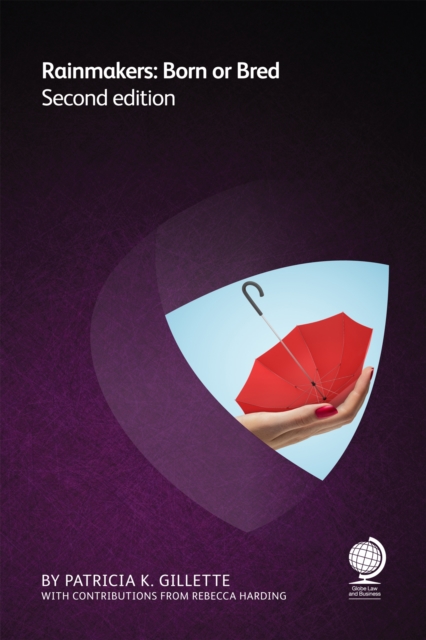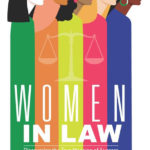Sweet 16 and never been kissed. That was the mantra for teenage girls in the 1950s and early 1960s. Sixteen was the beginning of everything — and if you had never been kissed, you soon would be, or so we all thought. It was the age you waited for because after that, everything was possible. And to celebrate reaching this auspicious number, you wore pink, you had a party with your friends, and you dreamed of the future.
Flash forward to 2011 and 16 is still a significant number for women. About 16 percent of the women lawyers in this country are partners in law firms; a little more than 16 percent of the general counsels are women; 16 percent of the members of Congress are women; and 16 percent of the CEOs are women. But these 16s do not signify hope, progress, or a bright future. Instead, they evidence the inability of women to progress in the professions they have chosen; they reflect years of women being passed over for positions of leadership and economic power. These 16s demonstrate the bitter truth that despite the fact that women are graduating from college and graduate schools in equal numbers to men, they are often still treated as less than equals in the workplace.
Taking a deeper dive into just one of these professions reveals even more depressing statistics. The recently published study by the National Association of Women Lawyers shows that less than 10 percent of the rainmakers in large firms are women; 80 percent of the law firms surveyed have, at most, two women on their highest governing committees; and female equity partners earn 85 percent of what their male counterparts earn.
This, or worse, has been the story since women were allowed to go to law school, and continues even after women have started graduating from law school at the same rate as men.
Over the years, we have heard varying explanations for these numbers: women opt out, women don’t need jobs to define themselves, women don’t have business development skills, women choose not to be in leadership positions, women just don’t work as hard, don’t care as much, and don’t have the drive and grit it takes to be at the top of the legal industry. And so, one begins to wonder, are these explanations or excuses? Do women not succeed at the rate they should because there is something different/wrong/selflimiting about the way they act vis-a-vis men in the legal world?
The answer is complicated. On the one hand, some women do engage in behaviors that are self-limiting: they are risk averse, they don’t want to fail, they don’t like to ask, they don’t self-promote. On the other hand, stereotyping can prevent women from even being considered for positions of leadership. For example, a stereotype that is often unspoken, but nevertheless common, is that women with children are more conflicted about their professional and personal obligations than men. This stereotype becomes most evident when a woman has a child.
Given the billable hours expectations and 24/7 demands of some clients, there is a risk that the woman’s commitment will be viewed as less certain than it was before the child was born because that fits the traditional stereotype. As a result, the woman may fall off the list— if she was even on it in the first place — as a potential leader of the firm, at least until she proves continued commitment. Contrast that with the man who becomes a father, and is then seen as more committed and more tied to the firm, and thereby still in the pool for leadership and power opportunities.
This is one of the more obvious examples of the hidden bias that keeps women out of leadership positions. The truth, of course, is that this problem is far more insidious and far more rampant than any of us would like to believe. In fact, some experts say that gender stereotyping is so ingrained in our culture that men often don’t even register women’s strengths, except for those that fit into their stereotyped image of how women should act and what women should do. As a result, women are easily credited with the traditional “soft” skills —collaboration, relationship building and teamwork – but are not seen as hard driving, business oriented leaders who can get a job done —even if they can or have.
So what do we do? Are we in some kind of Groundhog Day world where women will remain sweet 16 for all eternity? Hopefully not and especially not if we want our firms to progress and thrive in the current world. We know that when women are let in the boardroom, for example, they bring important skills to the table. In fact, the research shows that corporations with 30 percent or more of women on their boards are more successful than those with fewer women. It makes no sense, then, to not to move beyond the sweet 16s.
But to do so, we must address the limits imposed by unconscious bias. That requires a conscious commitment to actively recruit and groom women for leadership positions. And that means more than the token woman on the token committee. It requires firms to look at all of their women — just as they look at all of their men —as potential leaders and power players and to be willing to envision and commit to more than the one or two “women’s” seats at power tables or at the top of the compensation list. To effect that change, firms must create a level playing field where they recognize the presence and impact of hidden bias in their decision-making processes. That level playing field includes transparency in the way leaders are identified and groomed; accountability for the ways in which the firm develops and transitions large client relationships; and training to help partners assess and acknowledge their own biases and prejudices that may be holding women back.
Of course, these kinds of changes will only work if women also take responsibility for stepping out of what, for some, is their comfort zone by asking for and preparing themselves for positions of leadership and economic power.
It is time for corporations and professional services firms to acknowledge that there is nothing sweet about the 16s that continue to characterize their leadership ranks. These 16s hold no promise of things to come. Instead, they represent a status quo that ignores the reality of the new professional world where women and men exist in equal numbers and bring complimentary and different skills to leadership and power positions that are necessary to any successful organization. It is time to move past the 16s and find a new sweet spot.
By Patricia K. Gillette
Published in Employment Law 360
March 11, 2011
This article is for general information purposes and is not intended to be and should not be taken as legal advice.

